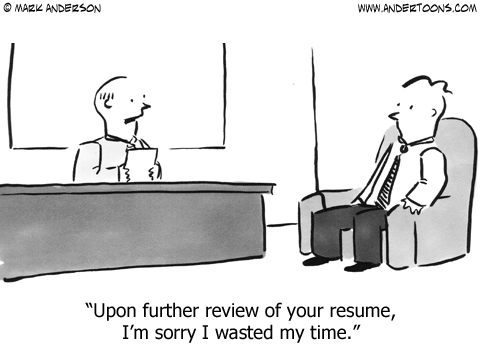Do you have a great idea for improving your industry? For most people, inventing a new product is foreign territory. There are multiple steps (and costs!) involved in bringing an idea to life — like market research, product design and prototyping, patent and legal fees and marketing, just to name a few.
At Edison Nation Medical, we have worked with thousands of inventors and entrepreneurs over the past decade, and we’ve learned a lot about which ideas are viable and which are not, particularly from a financial point of view. We do know that innovation requires expertise and money.
The question is, how do you know if your idea is worth investing in? And, if it is worthy of investment, how much?
Calculating ROI
ROI is a performance measure used to evaluate the efficiency of an investment. To calculate ROI, the return or net profit derived from the investment is divided by the total resources that were invested (the initial investment plus any subsequent costs). The results are expressed as a percentage:
ROI = (Net Profit)/(Invested Resources) X 100
The primary advantage of an ROI calculation is its ability to quantify the benefits of investments and returns of varying size. For instance, if Jack and Cindy invest in two different products and Jack makes $50,000 in profits and Cindy makes $100,000 in profits, you might think that Cindy made a better investment.
But if Cindy’s costs were $80,000 and Jack’s were only $10,000, Cindy’s ROI is 25 percent and Jack’s is 400 percent, making Jack’s investment the better one. The absolute dollar value of profits generated is meaningless without considering the investment that was required to generate those profits.
Net Present Value (NPV) and Internal Rate of Return (IRR)
As informative as ROI may be, its greatest shortcoming is that it ignores the importance of “time value of money.” Consider two projects (“A” and “B”) that may require the same investment and eventually earn the same return; if the return for “A” occurs in just one year while the return for “B” is not realized until year five, the better investment is “A.” Calculating the time value of money is especially important for new product introductions that typically entail a long developmental lead time and generate returns that vary year by year.
To do this, create an Excel spreadsheet and follow these steps:
- In the first year, show the total investment needed to launch your invention idea. Enter this as a negative number to reflect your anticipated investment costs.
- In years one through five, you need to calculate your projected free cash flow (in other words, your anticipated profits after all expenses have been paid that year). If you have an income statement this will end at Net Income.
- From this Net Income, add back your Depreciation and Amortization. Subtract Capital Expenditures and increases in Net Working Capital (e.g. increases in year-over-year Current Assets minus Current Liabilities).
Net Income
+ Depreciation/Amortization
– Change in Working Capital
– Capital Expenditure
—————————-
= Free Cash Flow
Then calculate the following important ratios:
- Net Present Value (NPV): This is the present value of a series of cash flows generated by an investment, minus the initial investment. NPV is calculated because of the important concept that money today is worth more than the same money tomorrow. The basic rule of thumb is that if a project is NPV positive, it should be accepted.
- Internal Rate of Return (IRR): IRR calculations are commonly used to evaluate the desirability of investments or projects. The higher a project’s IRR, the more desirable it is. The easiest way to calculate IRR is to use the formula built into Excel. Simply type “=IRR” in an empty cell and follow the prompts to complete the formula. A simple way to think of IRR is that, over the next X years, your invention may have some years with losses (in particular, year one), some years with profits (if all goes as planned), and some years that break even. IRR is a bit like calculating the average profitability over all X years, with extra credit if the investment gets paid back sooner rather than later.
- Payback: This measures the amount of time it takes a firm to recoup the initial costs of a project without taking into account the time value of money.
Going back to our earlier example, Cindy’s IRR on her $80k investment in the first five years turns out to be 13 percent with a payback in two years. This is not a bad outcome for a personal investment, and it beats the returns she might get on a money market fund, but it is not a “25 percent return” as the ROI suggests.
Likewise, Jack’s product idea is still a very attractive investment, assuming he can keep costs to $10K and generate the anticipated profits as quickly as expected. But for him to represent his invention idea as having a potential “400 percent return” would also be incorrect since his true rate of return is 209 percent. The NPVs for both investments in this case are positive, and thus should be pursued.
Innovation Is a Business Opportunity
Why is any of this important to an inventor? Adjusting the forecast model may give insight into how best to proceed in bringing a new product to market. If the initial investment can be minimized through a shared developmental program, a project’s IRR can actually improve – depending on changes to the project’s return and the timing of those returns.
In our experience, those who view their invention as a business opportunity (and keep their emotional attachment to their idea out of the equation) are the most successful. Calculating the fundamental financial metrics is a critical first step to ensuring that you are making smart business decisions grounded in real data. If your idea still looks financially viable, it may well warrant the investment of significant time and money. If not, you may want to start brainstorming your next big idea instead.
Bobby Grajewski is President of Edison Nation Medical, a healthcare product and medical device incubator and online community for people that are passionate about healthcare innovation. Prior to joining Edison Nation Medical, Grajewski, a serial entrepreneur, co-founded two online companies (Heritage Handcrafted and eCollectors) and spent 5 years in venture capital and private equity both in the middle market and at larger LBO firms.
The Young Entrepreneur Council (YEC) is an invite-only organization comprised of the world’s most promising young entrepreneurs. In partnership with Citi, YEC recently launched StartupCollective, a free virtual mentorship program that helps millions of entrepreneurs start and grow businesses.













